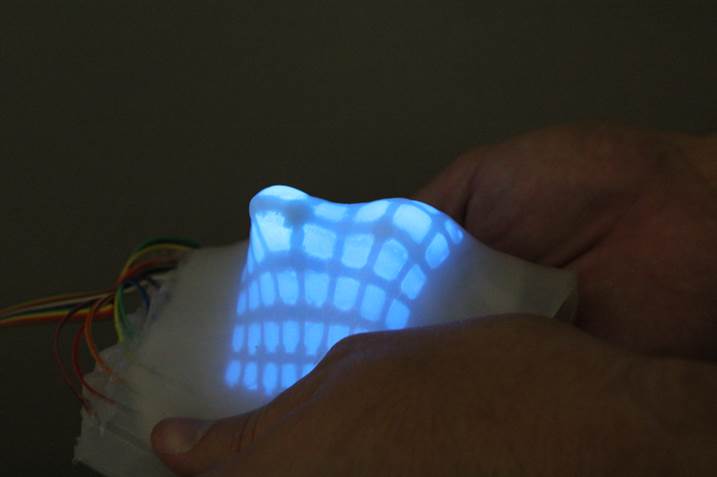In an advance for soft robotics, a young technology that finds inspiration in living things, research engineers developed a promising material that imitates the extraordinary flexibility, sensitivity, and luminescence of squids, octopuses, cuttlefish, and other cephalopods. See also: Cephalopoda; Robotics

Soft robots are made of elastomeric polymers rather than rigid materials. Their movements and actions, such as grasping and manipulating objects, are often controlled by shape and volume changes in these polymers. One challenge to the practicality of soft robots has been finding a way to incorporate sensors and electronic displays into their flexible, stretchy materials. See also: Elasticity; Microsensor; Polymer
Cephalopods are living proof that such capabilities do not depend on rigidity. Octopuses, for example, can change their shape, texture, color, and brightness. These soft-bodied creatures use these actions not just to fool potential predators, but also to communicate and even to propel themselves.
In a soft mobile robot operated by air inflation and deflation, researchers from Cornell University demonstrated a stretchable membrane that mimics cephalopod skin by emitting light and sensing changes in internal and external pressure (Science, March 2016). The material, called a hyperelastic light-emitting capacitor (HELC), is made of transparent hydrogel electrodes in contact with copper- or manganese-doped zinc-sulfide phosphors that are embedded in a stretchable silicone elastomer (rubber). When an alternating current (ac) electric field is applied, the copper-doped phosphors emit either green or blue light, depending on the concentration of copper used, and the manganese-doped phosphors emit yellow light. The HELC thus functions as a display that can change color and shape. The HELC also works as a sensor because as the skin is stretched, changes in the electrode area cause the capacitance to change, thereby allowing deformation of the skin to be measured. The HELC can be stretched to 480 percent of its original two-dimensional length while maintaining its light-emitting and sensing properties. See also: Alternating current; Capacitance; Electric field; Electrode; Electroluminescence; Microengineered hydrogels; Rubber; Silicone resins





